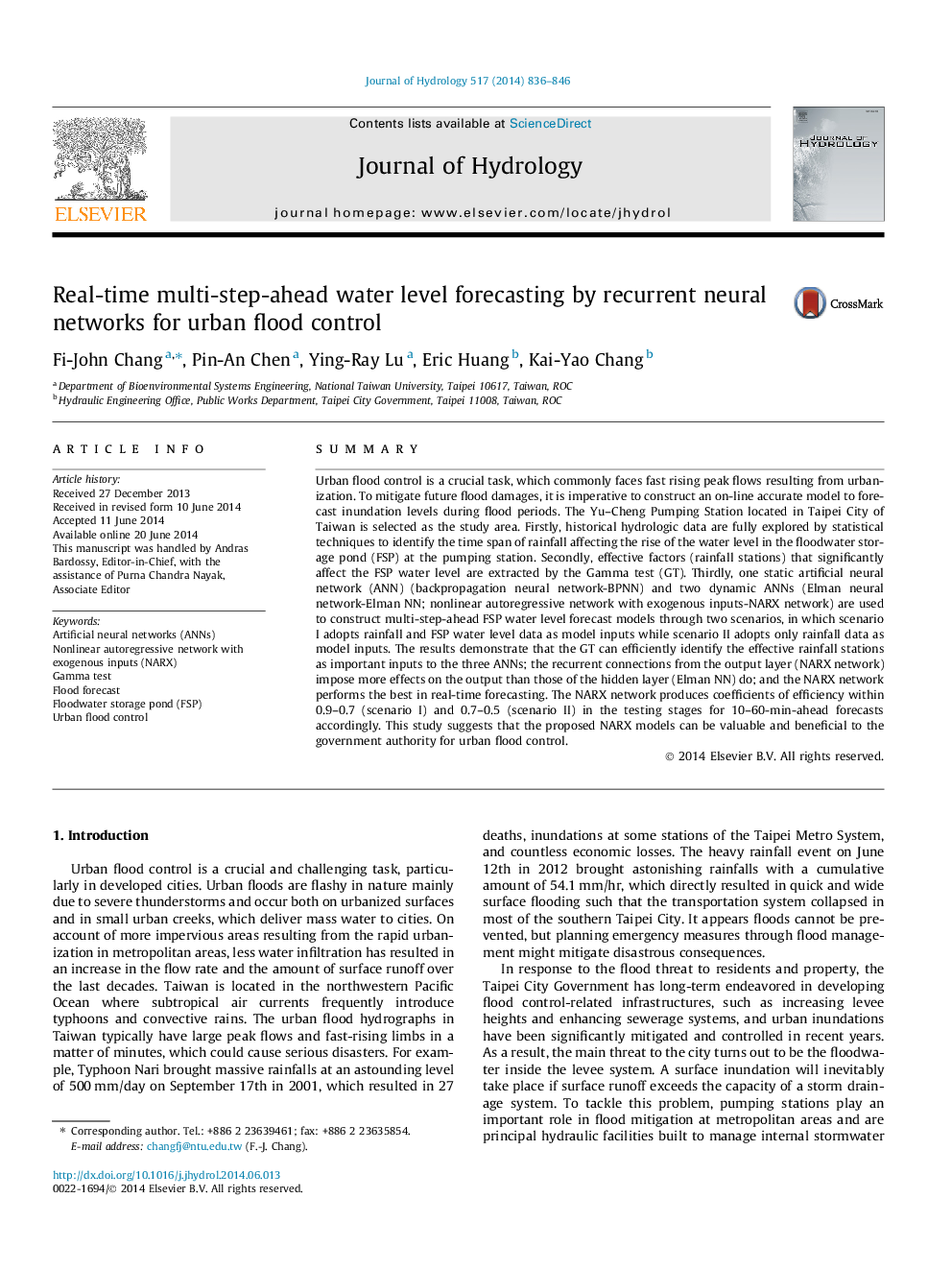| کد مقاله | کد نشریه | سال انتشار | مقاله انگلیسی | نسخه تمام متن |
|---|---|---|---|---|
| 6413042 | 1629931 | 2014 | 11 صفحه PDF | دانلود رایگان |
- Modeling multi-step urban flood forecasts by ANNs (one static and two dynamic NNs).
- GT can identify effective factors for ANNs; dynamic ANNs are superior to static one.
- Recurrent connections impose more effects from output layer than from hidden layer.
- NARX can effectively utilize long-term dependency to mitigate fluctuation problems.
- NARX can well construct and conduct multi-step-ahead water level forecast models.
SummaryUrban flood control is a crucial task, which commonly faces fast rising peak flows resulting from urbanization. To mitigate future flood damages, it is imperative to construct an on-line accurate model to forecast inundation levels during flood periods. The Yu-Cheng Pumping Station located in Taipei City of Taiwan is selected as the study area. Firstly, historical hydrologic data are fully explored by statistical techniques to identify the time span of rainfall affecting the rise of the water level in the floodwater storage pond (FSP) at the pumping station. Secondly, effective factors (rainfall stations) that significantly affect the FSP water level are extracted by the Gamma test (GT). Thirdly, one static artificial neural network (ANN) (backpropagation neural network-BPNN) and two dynamic ANNs (Elman neural network-Elman NN; nonlinear autoregressive network with exogenous inputs-NARX network) are used to construct multi-step-ahead FSP water level forecast models through two scenarios, in which scenario I adopts rainfall and FSP water level data as model inputs while scenario II adopts only rainfall data as model inputs. The results demonstrate that the GT can efficiently identify the effective rainfall stations as important inputs to the three ANNs; the recurrent connections from the output layer (NARX network) impose more effects on the output than those of the hidden layer (Elman NN) do; and the NARX network performs the best in real-time forecasting. The NARX network produces coefficients of efficiency within 0.9-0.7 (scenario I) and 0.7-0.5 (scenario II) in the testing stages for 10-60-min-ahead forecasts accordingly. This study suggests that the proposed NARX models can be valuable and beneficial to the government authority for urban flood control.
Journal: Journal of Hydrology - Volume 517, 19 September 2014, Pages 836-846
